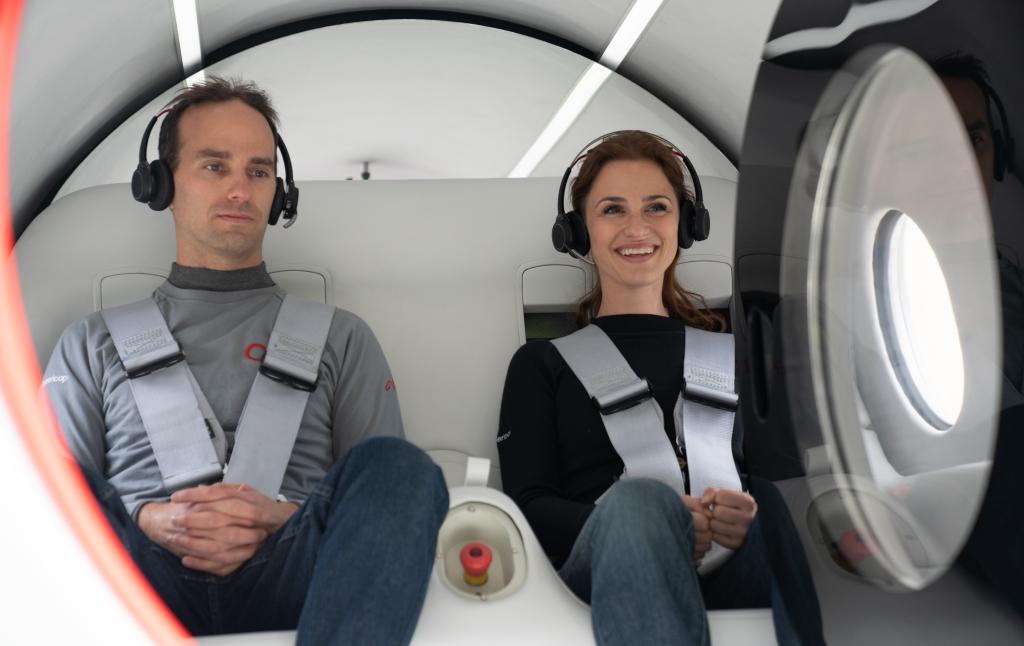The Virgin Hyperloop is a magnetic levitation train pod contained in an enclosed low pressure tube that has an environment similar to flying at 200,000 feet of altitude. This allows the pod to travel at around 1000kph using magnetic levitation which glides over multiple surfaces for long distances at speed with very little energy consumption and zero emissions. You basically travel at the speed of an airline with the convenience of a train.
By travelling in a partial vacuum in tubes, there is no friction and air resistance that traditionally slows down existing forms of travel. Magnetic levitation is already used in monorails and other fast trains, but by putting the pods in a tube and removing most of the air from the tube the pods face little to no resistance as they travel. Also as the pod is contained in a tube the system can operate in any climatic condition.
A test journey took place in Las Vegas on 8-Nov-2020 when two people were safely transported along the 500 metre test track. Travelling on the Hyperloop will be made comfortable and seamless with a sensation a bit like an aircraft taking off with around 0.2G and once up to speed there is no turbulence so it's a smooth and comfortable journey. Currently the plan is to have pods that take around 25 people.

The system has already been given the green light by the US Department of Transportation when in Jul-2020, Secretary Elaine Chao and the Non-Traditional and Emerging Transportation Technology (NETT) Council unveiled a guidance document on a clear regulatory framework for hyperloop in the United States. This announcement not only provides a pathway for hyperloop regulation and deployment in the US, but also establishes hyperloop's eligibility for federal funding for projects.
There are currently four different US feasibility studies taking place in Colorado, Missouri, Texas and the Midwest, plus a number in the Middle East and also one in India connecting Mumbai to Pune. The first full scale track for public use should be up and ready in at least one of these areas by the mid 2020s.
The Mumbai to Pune track would reduce travel time from 3+ hours to 30 minutes. Between Dubai and Abu Dhabi the journey time would reduce to just 12 minutes, between New York and Washington the journey would take just 30 minutes. The concept could be developed to join up Heathrow and Gatwick airports, on two sides of London, with a journey time of just four minutes.
Magnetic levitation trains do already exist, for instance from Shanghai centre to the airport and in Japan which currently holds the speed record at 603 kph. The Virgin Hyperloop system varies from other magnetic levitation trains as the pods are contained in a low pressure tunnel. The concept builds on a proposal by Elon Musk who proposed a hyperloop concept but then invited groups to take the idea and develop it further. There are a number of other projects out there looking at hyperloop travel but the Virgin Hyperloop is the first one to successfully carry passengers.
The system will need a lot of infrastructure to be built so it may not work in every country but there are certainly plenty of locations around the world which would welcome a hyperloop track to join up two destinations and cut travel time. From an environmental perspective this is the future of domestic travel and domestic business travel will certainly welcome these short journey times, even if they may initially come at a price.